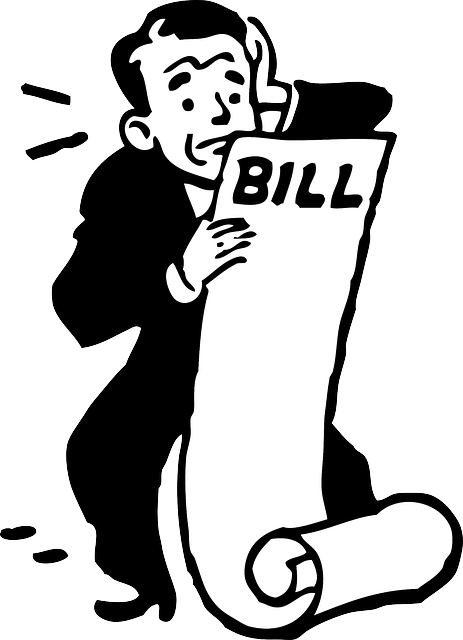Multiple debts create complexity and stress, so consolidating them into a single loan offers a clear, cost-saving solution. This simplifies tracking, lowers interest rates, prevents missed payments, improves credit scores, and opens better borrowing opportunities. By focusing on one loan with strategically chosen terms, individuals regain control over their finances and move towards long-term stability. Choosing the right lender specializing in debt consolidation is key to a successful process that reduces stress, saves money, and simplifies monthly bills.
Tired of juggling multiple bills each month? Unlock the secret to financial freedom with debt consolidation into one simple, manageable loan. This comprehensive guide explores the profound impact of multiple debts on your life and shows you how consolidating can simplify payments, reduce interest rates, and free up money for other priorities. Discover the various types of debt consolidation loans available and learn essential tips for choosing the right lender. We’ll also share real-life success stories highlighting the transformative power of this strategy.
- Understanding the Impact of Multiple Debts
- Benefits of Consolidating Debt into One Loan
- Exploring Different Types of Debt Consolidation Loans
- Choosing the Right Lender for Your Needs
- Step-by-Step Guide to Consolidate Debt Effectively
- Real-Life Success Stories: How Debt Consolidation Transformed Lives
Understanding the Impact of Multiple Debts

Multiple debts can create a complex financial landscape, often leading to increased stress and reduced clarity about one’s financial situation. Each debt has its own set of terms, interest rates, and payment schedules, making it challenging to keep track and manage effectively. This fragmentation can result in higher interest charges, missed payments, and a sense of being overwhelmed.
Consider the potential benefits of consolidating these debts into a single loan. By doing so, you simplify your financial obligations by combining all your debts under one roof. This not only makes it easier to keep track of payments but also allows for potentially lower interest rates, as the lender may offer a more competitive rate on a larger loan. As a result, consolidating debt can help in managing finances with greater ease and saving money over time.
Benefits of Consolidating Debt into One Loan

By consolidating debt into one loan, individuals can simplify their financial obligations and gain significant advantages. This strategy allows for a single monthly payment, streamlining budgeting and making it easier to keep track of expenses. One of the most substantial benefits is reduced interest payments; instead of paying multiple lenders with varying interest rates, you focus on a single loan with potentially lower overall interest.
Consolidating debt can also improve credit score over time by demonstrating responsible management of credit. With less financial spread across multiple accounts, individuals appear less risky to lenders, which can lead to better borrowing opportunities in the future. This process provides a clear path to debt repayment, helping folks regain control of their finances and move towards a more stable financial future.
Exploring Different Types of Debt Consolidation Loans

When considering a debt consolidation strategy, one of the primary options is exploring loans designed to consolidate debt into a single, manageable payment. These loans can streamline financial obligations by combining multiple debts into one, simplifying repayment processes. There are various types of debt consolidation loans available, each with unique features and terms. For instance, secured loans often require collateral, such as a home or vehicle, while unsecured loans do not, making them riskier for lenders but offering more flexibility to borrowers.
The interest rates and repayment periods also vary, catering to different financial needs and capabilities. Short-term consolidation loans may have higher monthly payments but result in quicker debt clearance, whereas long-term options offer smaller monthly installments but extend the pay-off period. It’s crucial to evaluate personal financial situations, assess interest rates, and understand the terms and conditions before choosing a debt consolidation loan that aligns with individual goals and ensures a successful consolidation process.
Choosing the Right Lender for Your Needs

When it comes to unlocking the secret to managing your monthly bills, choosing the right lender is a crucial step. Look for lenders who specialize in debt consolidation and offer tailored solutions for different financial needs. A reputable lender will assess your unique situation, including your income, existing debts, and goals, to determine if consolidating debt into one loan is the best strategy for you.
This approach can simplify your payments by combining multiple debts into a single, more manageable loan with potentially lower interest rates. Reputable lenders provide transparent terms and conditions, ensuring you understand the costs and benefits of consolidation before making a decision. They also offer flexible repayment options to suit your budget, helping you regain control over your finances and say goodbye to multiple monthly payments.
Step-by-Step Guide to Consolidate Debt Effectively

Debt consolidation is a powerful strategy to simplify your finances and gain control over your monthly bills. By consolidating debt into one loan, you can say goodbye to multiple payments across various creditors. Here’s a straightforward guide to help you achieve this:
1. Evaluate your debts: Start by listing all your current debts, including credit cards, personal loans, and any other outstanding balances. Calculate the total amount owed for each and take note of the interest rates associated with them. This step is crucial as it allows you to understand the scope of your financial situation.
2. Choose a consolidation method: You can consolidate debt through a loan from a bank or credit union, often referred to as a debt consolidation loan. These institutions offer loans tailored to pay off multiple debts, making it easier to manage. Compare interest rates and repayment terms from different lenders to find the best fit for your financial goals.
3. Apply for the loan: Once you’ve selected a suitable lender, fill out the application form accurately. Provide details about your income, employment status, and current debts. The lender will assess your eligibility and, if approved, disburse the funds to pay off your existing debts.
4. Repay the consolidated loan: With your debt consolidated into one loan, you’ll make a single monthly payment at an agreed-upon interest rate. Ensure timely payments to maintain a good credit score and avoid penalties. This simplified repayment structure can significantly reduce stress and save money on interest charges over time.
Real-Life Success Stories: How Debt Consolidation Transformed Lives

Debt consolidation is a powerful tool that has transformed countless lives for the better. Real-life success stories abound, with individuals and families finding solace from the weight of multiple loans and high-interest rates. By consolidating debt into one loan, many have achieved financial freedom and improved their overall quality of life.
One common narrative is the story of John, who, after years of struggling with credit card debt, decided to consolidate his balances into a single loan with a lower interest rate. This simple move allowed him to pay off his debts much faster and save thousands in interest charges. Similarly, Sarah, a young professional, found herself drowning in student loans and personal loans. Through debt consolidation, she was able to streamline her payments and allocate more of her income towards savings and investments, setting the stage for a secure financial future. These stories highlight how consolidating debt can simplify finances, reduce stress, and open doors to new opportunities.

